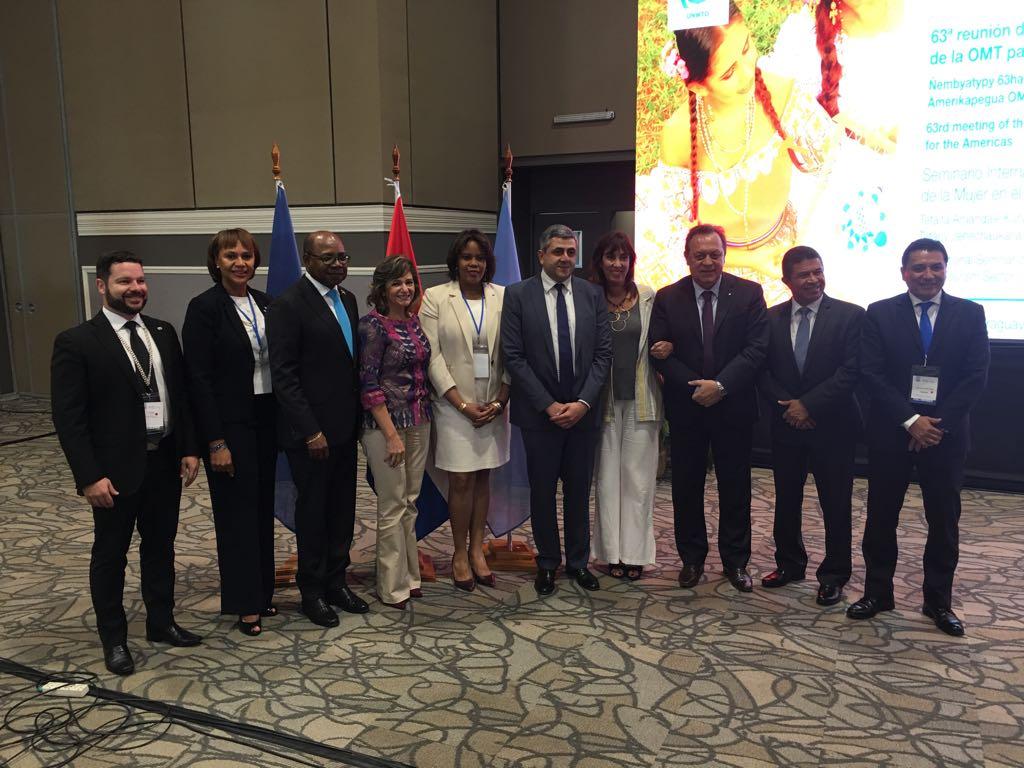WTTO Projects Bahamas Tourism Growth

Despite the World Travel and Tourism Council’s (WTTO) report that it can take up to four years for the Caribbean to fully recover from the tumultuous 2017 hurricane season, The Islands Of The Bahamas is forging ahead with growing its Travel and Tourism to GDP.
Recently, the WTTO launched a report on Resilience and Recovery in the wake of the 2017 hurricane season to analyze the immediate and long-term effects on the region.
Last week, Bahamas Ministry of Tourism and Aviation Director General Joy Jibrilu represented Minister of Tourism and Aviation Dionisio D’Aguilar as Chairman of the UNWTO Regional Commission in Asunción, Paraguay.
The 63rdmeeting of the UNWTO Regional Commission for the Americas was attended by 16 Ministers of Tourism from countries, such as Argentina, Brazil, Colombia, Chile, Paraguay, Uruguay and Jamaica among others.

Ms. Jibrilu also represented the Caribbean Tourism Organization (CTO) in Buenos Aires, Argentina at a press conference held by the WTTO to discuss the impact of hurricanes on the Caribbean region.
According to officials from the WTTO, the direct contribution of Travel and Tourism to GDP in 2017 in The Islands Of The Bahamas was $1.726 million or 19 percent of GDP.
This figure is forecasted to rise by 3.4 percent to $1,784.4 million in 2018.
“This primarily reflects the economic activity generated by industries such as hotels, travel agents, airlines and other passenger transportation services excluding commuter services. But it also includes, for example, the activities of the restaurant and leisure industries directly supported by tourists,” the WTTO reported.
Studies from the Tourism Economics, an Oxford University subsidiary, show that Travel and Tourism is one of the most important economic sectors in the Caribbean, contributing 15.2 percent of the Caribbean’s GDP and 13.8 percent employment.
However, in around half of the countries analyzed, the sector accounts for over 25 percent of GDP – more than double of the world average of 10.4 percent.
The analysis showed that in 2016, 46.7 million visited the Caribbean with a spend of $31.4 billion and supported 2.4 million jobs.
According to WTTO officials, the 2017 hurricane season resulted in an estimated loss of 826,100 visitors, who would have generated $714 million and supported 11,005 jobs.
WTTO officials believe that the season has cost the Caribbean a loss of $3 billion.
“Quantifying the impact on Travel & Tourism post-crisis provides a level of understanding of the enormous economic contribution that the sector brings to the region and the impetus for recovery. Natural disasters will continue to hit the Caribbean, perhaps on an increasingly frequent basis as a result of climate change. As the economies of islands grow ever more reliant on the sector, it is critical that governments and destination management organizations develop strategies to minimize the long-term impact of natural disasters and encourage visitor spending to return to pre-hurricane levels of growth,” the report said.
In The Islands of The Bahamas, Hurricane Maria inflicted severe damage on Ragged Island and Acklins Island, but the nation of 700 islands is fortunate that most were spared the worst of both Irma and Maria.
Ms. Jibrilu called on the Caribbean to come together to continue to rebuild.
“The events of last fall were tragic for so many across our Caribbean region, and our thoughts are still very much with the countries, businesses and families that are rebuilding their lives now. The best, most effective way to support this endeavor is for all of us to work together. This partnership must bring together public and private entities in our countries and region, and we must also be mindful that the progress of one country will tend to benefit our marketplace position as a region,” she said.